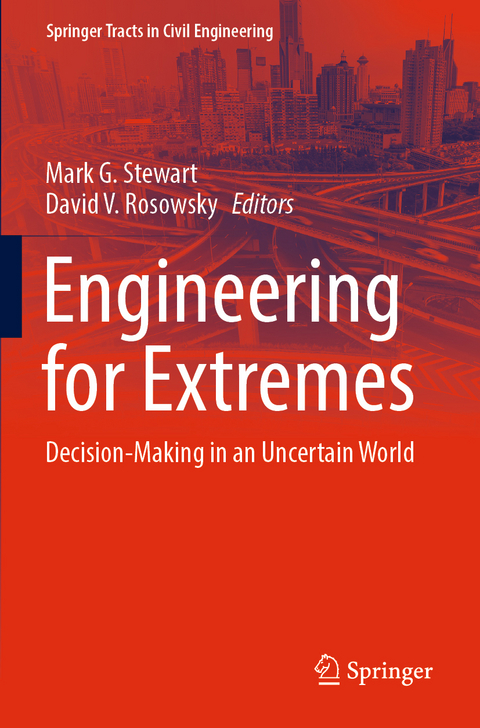
Engineering for Extremes
Springer International Publishing (Verlag)
978-3-030-85020-3 (ISBN)
The volume explains how risk and decision-making analytics can be applied to the wicked problem of protecting infrastructure and society from extreme events. There is increasing research that takes into account the risks associated with the timing and severity of extreme events in engineering to reduce the vulnerability or increase the resiliency of infrastructure. "Engineering for extremes" is defined as measures taken to reduce the vulnerability or increase the resiliency of built infrastructure to climate change, hurricanes, storms, floods, earthquakes, heat waves, fires, and malevolent and abnormal events that include terrorism, gas explosions, vehicle impact and vehicle overload.
The book introduces the key concepts needed to assess the economic and social well-being risks, costs and benefits of infrastructure to extreme events. This includes hazard modelling (likelihood and severity), infrastructure vulnerability, resilience or exposure (likelihood and extent of damage),social and economic loss models, risk reduction from protective measures, and decision theory (cost-benefit and utility analyses). Case studies authored by experts from around the world describe the practical aspects of risk assessment when deciding on the most cost-efficient measures to reduce infrastructure vulnerability to extreme events for housing, buildings, bridges, roads, tunnels, pipelines, and electricity infrastructure in the developed and developing worlds.lt;p>Mark G. Stewart is Professor of Civil Engineering and Director of the Centre for Infrastructure Performance and Reliability at The University of Newcastle in Australia. He is an international leader in risk assessment, public policy decision making, and protective infrastructure for extreme hazards. He is the author of several books, as well as more than 500 technical papers and reports. He has more than 30 years of experience in probabilistic risk and vulnerability assessment of infrastructure and security systems that are subject to man-made and natural hazards. In the past decade Stewart has led the way in risk-based assessment of terrorism and climate change impacts on engineering infrastructure with 25 keynotes at international conferences. He is Editor-in-Chief of Structural Safety, and a Fellow of the Australian Academy of Technology and Engineering.
David V. Rosowsky is Vice President for Research at Kansas State University where he also holds the title of Professor of Civil Engineering. Prior to joining K-State he served for six years as Provost and Senior Vice President and Provost at University of Vermont. Since 1990, he has conducted research in the areas of structural reliability, performance of wood structural systems, design for natural hazards, stochastic modeling of structural and environmental loads, and probability-based codified design. His current research addresses three topics: (1) behavior of the built environment subject to natural hazards, most recently including the effects of climate change and adaptation, (2) modeling and analysis of load effects on buildings and other structures with particular emphasis on complex environmental phenomena, and (3) performance-based engineering for design, post-disaster condition assessment, and loss estimation studies. Dr. Rosowsky has authored or co-authored more than 300 technical papers, and he is the recipient of the ASCE Walter L. Huber Research Prize, the T.K. Hseih Award from the Institution of Civil Engineers (UK), and the ASCE Norman Medal.
Introduction.- Decision-Making.- Case Studies.- Conclusions and Recommendations.
| Erscheinungsdatum | 28.03.2023 |
|---|---|
| Reihe/Serie | Springer Tracts in Civil Engineering |
| Zusatzinfo | XII, 451 p. 162 illus., 126 illus. in color. |
| Verlagsort | Cham |
| Sprache | englisch |
| Maße | 155 x 235 mm |
| Gewicht | 705 g |
| Themenwelt | Technik ► Bauwesen |
| Schlagworte | cost-benefit assessment • economic loss models • Extreme events • hazard modelling • infrastructure reliability • infrastructure vulnerability • Risk reduction |
| ISBN-10 | 3-030-85020-X / 303085020X |
| ISBN-13 | 978-3-030-85020-3 / 9783030850203 |
| Zustand | Neuware |
| Haben Sie eine Frage zum Produkt? |
aus dem Bereich


